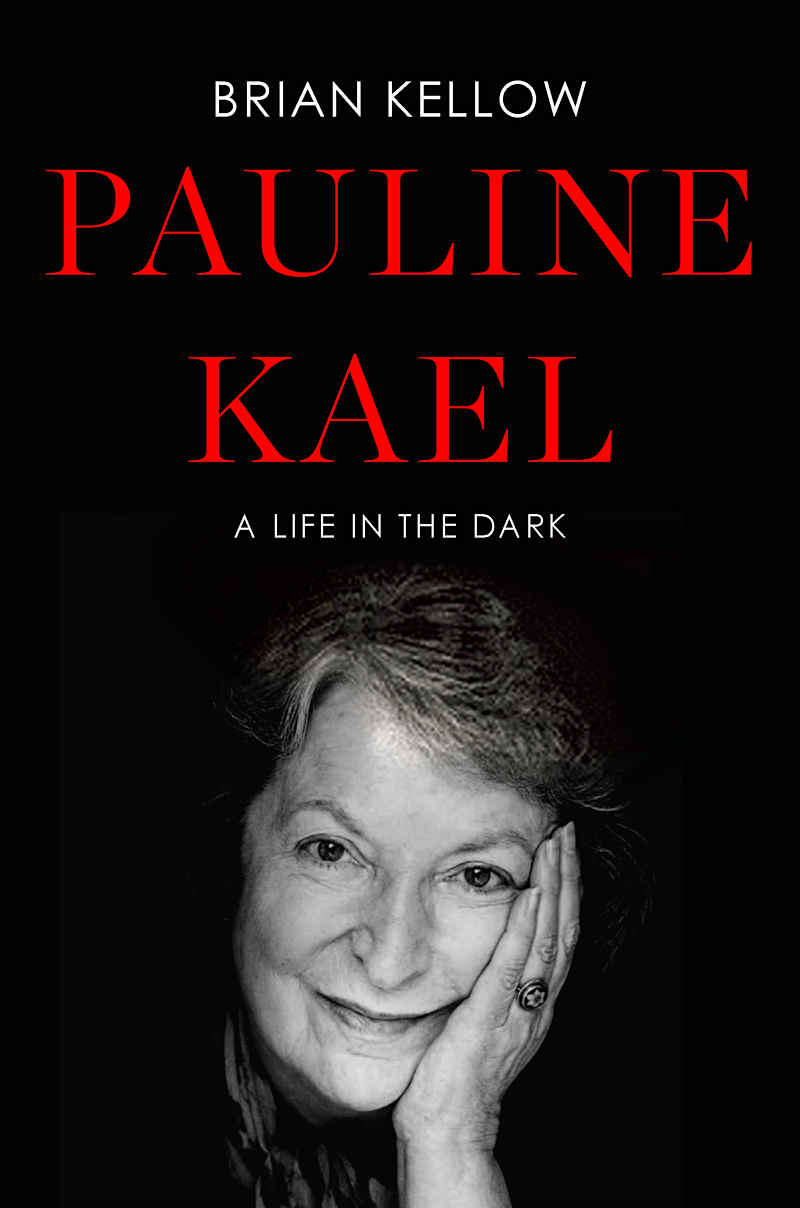No figure in the relatively brief history of American film criticism has proven as iconic, distinctive, or divisive as Pauline Kael, resident iconoclast of The New Yorker‘s “Current Cinema” section during some of the best years of cinema (and several afterward as well). Allergic to over-intellectualism and prone to fits of hyperbole, Kael was accused of picking fights and playing favorites. Filmmakers feared her, cinephiles adored her, editors dreaded her. But in her expansive essays, she took on American movies with an infectious enthusiasm and uncommon sincerity, and did it with a freedom and dexterity of prose that was, in its own way, revolutionary.
Brian Kellow’s Pauline Kael: A Life in the Dark (Viking, $27.95) is the first full-length biography of the writer, who died in 2001. “I’m frequently asked why I don’t write my memoirs,” Kael wrote in the introduction to her 1994 collection, For Keeps. “I think I have.” The notion that her life was the movies—how she saw them, how she wrote about them—is embraced by Kellow, who overcomes the lean biographical details of her formative years to find hints and clues about her upbringing and relationships buried in reviews of films like Hud and Fingers.
The chapters covering those days, of a young writer struggling to find her voice, hustling for freelance gigs, and raising a daughter alone, are the book’s best. Kellow evocatively captures the blooming of film culture in the early 1960s, and the sobriety with which Kael took over the critical pulpit. “Too much was at stake now,” he writes. “It was more important than ever for her to exhort her readers to support the true artists, the good films that enlarged the moviegoing experience, and cut down the tired, the dead, the formulaic, the meretricious.”
In passages like that, Kellow not only grasps the significance of his subject, but invokes the pace and energy of her singular style. His examinations of her romances are involving, and early on, the balance between biographical details and quotes from the reviews is just right. Alas, that equilibrium goes all askew once Kael lands at The New Yorker. Years pass without much of anything to talk about aside from her work, leading to long stretches of block quotes, connected by clunky transitions like “The most surprising review Pauline wrote during this period was . . . ” and “At year’s end she saw another movie that enabled her to dig into a film the way she liked to do.” Page after page in these sections amount to little more than a summary of her major writing. For that, Kael was right—we should just go to For Keeps and read the pieces without interruption.
Or, for that matter, without interpretation. While Kellow’s analysis is often trenchant (“The life was seeping out of the film movement of the 1970s, and she knew it. All the more reason, then, to intensify her advocacy for the movies she loved, even for those that she thought simply showed promise”), his conclusions are frequently puzzling. He slams Kael’s appraisal of Ellen Burstyn’s performance in Alice Doesn’t Live Here Anymore for “speculating on the private thought processes of the actress” and engaging in “crystal-ball gazing, pure and simple” that is “quite out of critical bounds.” According to whom?
Later he follows a long chunk of Kael’s The Little Mermaid pan with a paragraph detailing the picture’s financial success, and dismissively leaves it at that. So what? Kellow’s rejoinder reads like a snidely underhanded insinuation that Kael was suddenly out of touch with popular taste—but she’d never given much truck to hype, and had certainly never hesitated to skewer pictures that topped the box-office charts (The Exorcist, Dirty Harry, West Side Story, The Sound of Music).
More intriguing are the sections dealing with the controversies and feuds that began to overshadow Kael’s writing in the ’80s, though Kellow’s reportage is frustratingly shallow. The furor surrounding Renata Adler’s notorious 1980 takedown of Kael in The New York Review of Books is entertaining to read about—Adler dismissed Kael’s collection When the Lights Go Down as “piece by piece, line by line, and without interruption, worthless.” But why did it happen? (Adler is not interviewed.) Kellow has some good, dishy fun with Kael’s ill-fated, Warren Beatty–brokered sojourn to Hollywood (the actor/producer convinced Kael to try at her hand at film producing, with unfortunate results). However, Peter Biskind’s bio of Beatty, Star, offers more penetrating insight into why she did it, and why it didn’t fly.
A Life in the Dark has patches of greatness, moments that capture both the thrilling essence of Kael’s writing and the urgency of the form she was responding to. Still, it’s a bumpy ride, too spotty and incomplete. Five pages from its conclusion, Kellow writes of a proposed but unrealized biography, conceived “as more of an interior look at Pauline’s life than a conventional biography.” At the end of this quite conventional biography, that’s a compelling idea indeed.




